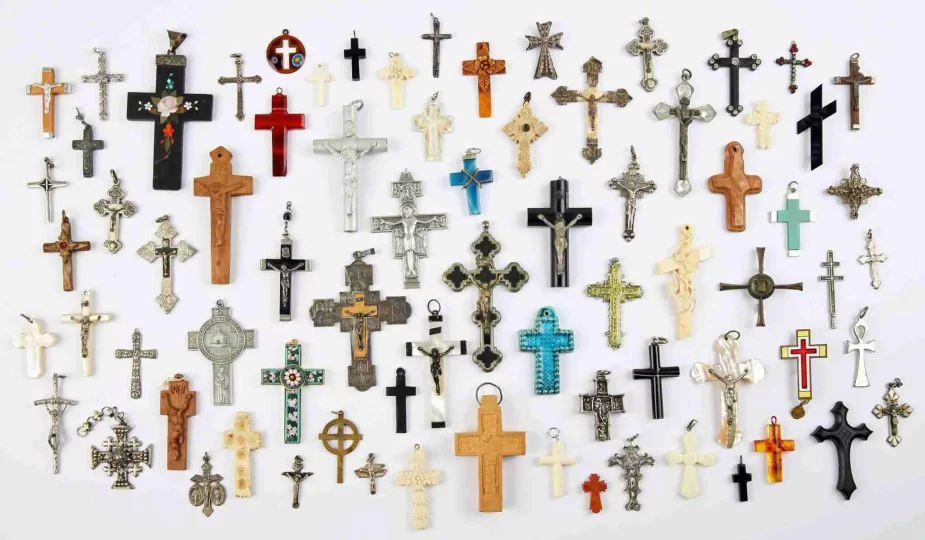The cross, a simple yet profound design of intersecting lines, has carried deep meaning across cultures for centuries, long before its association with Christianity.
Variations of the cross appeared in pagan religions as potent symbols, while in ancient Egypt, the ankh—a cross-like figure with a looped top—represented eternal life and the divine balance between the mortal and spiritual realms. With the crucifixion and its central importance to Christianity, the cross evolved into a universal emblem of faith, adopted as a visual declaration of devotion and belief that endures to this day.
From the ancient Egyptian ankh to the opulent crosses of the Renaissance, the symbol’s evolution reflects the enduring interplay between spirituality, art, and culture. The cross remains timeless and transformative, a powerful emblem of the complex relationship between devotion and identity.
The Ancient Egyptian Ankh and Its Connection to the Cross
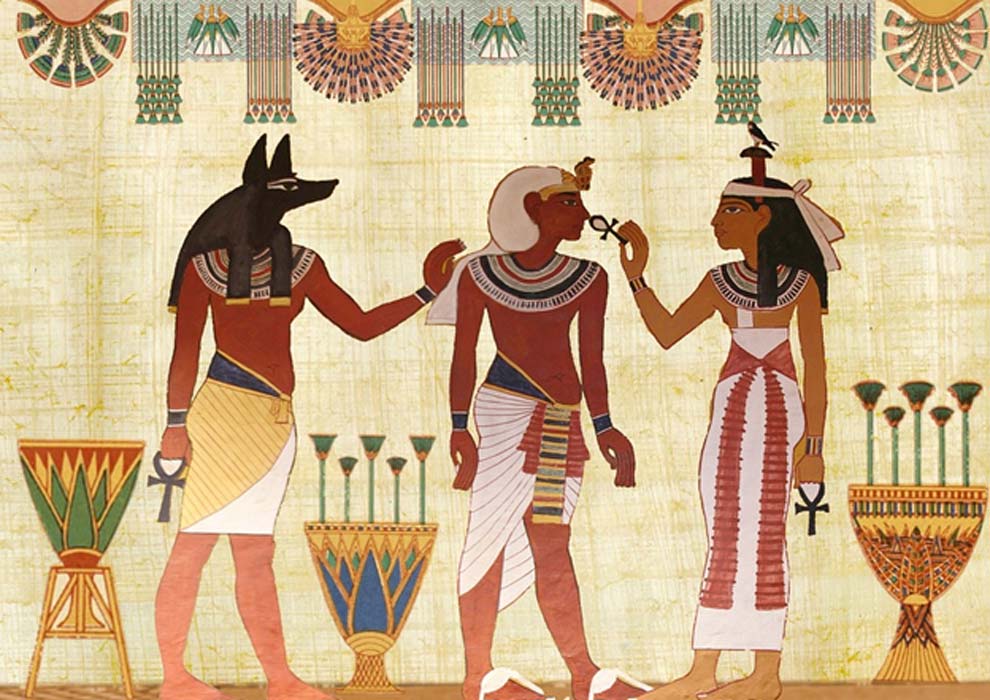
The story of the cross, so central to Christian iconography, finds echoes in the ancient Egyptian ankh, a symbol imbued with profound meaning and cultural significance. Long before the cross became a global emblem of faith and salvation, the Egyptians used the ankh—a looped cross—as a representation of eternal life.
Often seen in the hands of gods and pharaohs, the ankh was more than just a decorative motif; it was a sacred token, symbolizing the life-giving force and the divine balance between the mortal and spiritual realms.
Crafted with simplicity yet rich in symbolism, the ankh appeared in paintings, carvings, and jewelry, demonstrating its universality in Egyptian culture. It was closely tied to the sun, water, and air—elements essential to sustaining life.
Frequently depicted in the hands of deities such as Isis and Osiris, the ankh was held to the noses of the dead, symbolizing the gift of eternal breath in the afterlife.
While the ankh’s connection to the Christian cross is not direct, the visual and spiritual parallels are striking. Both symbols convey a profound reverence for life, death, and the promise of transcendence. Early Christians living in Egypt may have been influenced by the ankh, subtly weaving its shape and meaning into their emerging visual language of the cross.
As Christianity spread across the Mediterranean, the cross adopted its own distinct identity, rooted in the story of the crucifixion.
Yet, the legacy of the ankh as an early representation of divine protection and immortality lingers in its echoes within the Christian symbol. This enduring connection between ancient Egyptian culture and the Christian cross highlights how civilizations build upon and transform the sacred imagery of their predecessors, linking faiths and cultures through shared expressions of the eternal.
The Cross in the Middle Ages: Faith, Devotion, and Power
In the Middle Ages, the cross became a profound symbol of faith and a visual declaration of devotion, while also reflecting the societal structures of the time.
Gold crosses, often adorned with intricate filigree, colorful enamels, and precious stones, were crafted with a level of artistry that mirrored the grandeur of Gothic architecture.
These crosses were not only spiritual emblems but also powerful indicators of social rank, often worn prominently over clothing by clergy and nobility.
Monastic artisans, working within the sacred confines of abbeys, infused these creations with reverence and skill, ensuring that each cross carried both aesthetic beauty and symbolic weight.
For the devout, the cross was more than a piece of jewelry—it was believed to offer divine protection, a shield against spiritual and worldly evils.
This sacred object, imbued with layers of meaning, stood at the heart of medieval life, representing the deep intertwining of religion, art, and the hierarchical structure of society.
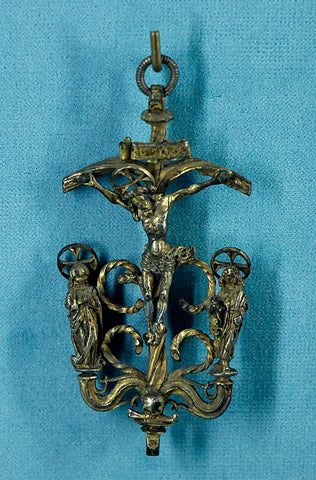
Pendant representing the crucifixion of Christ between Mary and St. John. Chased silver, Southern Germany or Austria, second half of the 15th century, Musée de Cluny
The Cross in the Renaissance: Faith, Power, and Artistic Splendor
During the Renaissance, the cross underwent a transformation that mirrored the era’s embrace of artistic innovation, religious fervor, and the reassertion of human achievement.
No longer merely a symbol of faith, the cross became a canvas for the finest craftsmanship, reflecting both spiritual devotion and worldly power. This was a time when the sacred and the opulent intertwined, and the cross stood at the heart of this cultural and religious revival.
Renaissance crosses, often worn as pendants or carried as reliquaries, showcased a remarkable shift in design.
Goldsmiths and jewelers pushed the boundaries of their craft, adorning crosses with intricate enameling, detailed filigree, and an abundance of precious gems. Rubies, emeralds, and pearls were set into elaborate patterns, symbolizing divine light and heavenly beauty.
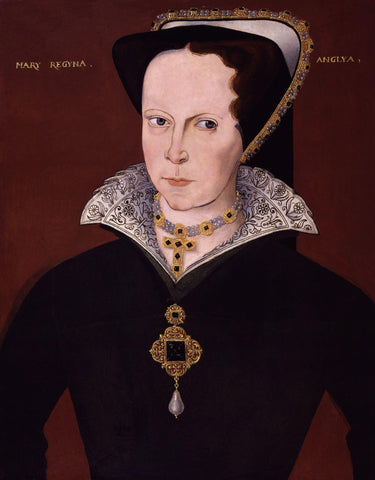
These magnificent creations were far removed from the simpler, utilitarian designs of earlier centuries, becoming instead striking works of art.
The Renaissance also marked the cross as a statement of status and piety for the elite. Wealthy patrons, including monarchs and nobles, commissioned bespoke crosses, often personalized with family crests or inscriptions.
In portraits of the period, sitters are frequently depicted wearing ornate crosses, signaling their faith, affluence, and connection to the Church. The cross became not just a marker of Christian devotion but also a way to display allegiance to the prevailing power structures of the time.
In this period of exploration and rediscovery, crosses also reflected the broader exchange of ideas and materials. The revival of classical antiquity, a hallmark of the Renaissance, inspired designs that blended Christian iconography with Greco-Roman motifs. At the same time, trade routes brought exotic materials and new techniques to Europe, enriching the artistic vocabulary of cross-making.
The Renaissance cross, therefore, was far more than a religious symbol. It embodied the values of the era: faith, beauty, human ingenuity, and the merging of spiritual and worldly aspirations. These masterpieces, whether worn or displayed, are enduring reminders of a time when art and devotion reached unparalleled heights, leaving a legacy that continues to captivate the imagination.
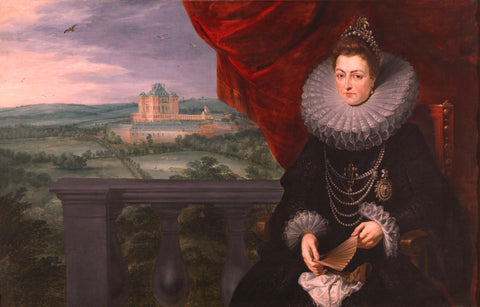
In this stunning portrait, a large cross with dark stones and dangling pearls is just visible amongst the portrait sitter’s dark attire. Isabella Clara Eugenia ruled the Spanish Netherlands and Low Country with her husband, and she was the daughter of the King of Spain. Her large cross is a strong symbol of her faith that powered her and her family’s rule.
The Cross in the 18th Century: Elegance and Devotion
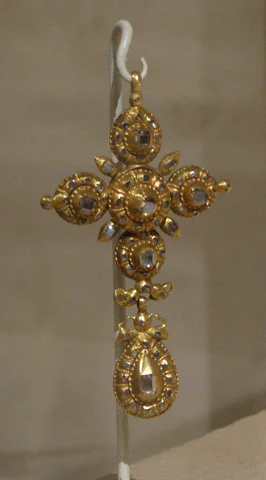
In the 18th century, the cross became a symbol of both personal faith and fashionable refinement, reflecting the era’s delicate balance between religious devotion and the growing influence of aesthetic trends.
While the Baroque period’s dramatic and ornate styles lingered in the early part of the century, the Rococo movement introduced a lighter, more whimsical approach to design, which extended to the creation of crosses.
Crosses from this time were often crafted in gold and silver, adorned with gemstones, pearls, or intricate engravings. The design shifted towards softer, more fluid forms that mirrored the Rococo emphasis on elegance and natural motifs.
Delicate scrollwork, floral patterns, and airy curves often framed the cross, lending it a gracefulness that aligned with 18th-century ideals of beauty and refinement.
For the devout, crosses served as visible expressions of faith, frequently worn as pendants or brooches. Wealthier individuals often commissioned bespoke pieces, their crosses incorporating diamonds, rubies, or other precious stones to showcase both their piety and their social status.
These adornments were not merely religious emblems but also markers of taste and wealth, worn prominently in portraits and at social gatherings.
The religious significance of the cross remained central to its design, particularly during a time when the Church continued to exert considerable influence. However, the Age of Enlightenment also brought subtle changes to the way crosses were perceived and utilized.
As rationalism and secular thought began to take root, crosses started to reflect a dual purpose: a spiritual anchor for the devout and an accessory imbued with cultural and personal significance.
By the end of the 18th century, as revolutionary fervor swept across Europe, the cross also became a symbol of endurance and hope in tumultuous times. In regions affected by political upheaval, crosses served as both personal talismans and public declarations of resilience, bridging the sacred and the secular in a period of profound change.
Thus, in the 18th century, the cross maintained its deep religious roots while embracing the artistic sensibilities and social dynamics of the age. It stood as a testament to the enduring interplay between faith, fashion, and the shifting tides of history, encapsulating the spirit of an era defined by both tradition and transformation.
The Cross in the Victorian Era: Sentiment, Faith, and Elegance

The Victorian era (1837–1901) witnessed the cross become one of the most iconic symbols of personal faith, mourning, and devotion, deeply intertwined with the period’s emphasis on sentimentality and morality.
Worn close to the heart, crosses reflected not only religious conviction but also the values and emotional expressions of a society captivated by symbolism and adornment.
Victorian crosses were often designed with an exquisite attention to detail, crafted in gold, silver, and jet— each material carrying its own connotation.
Gold and silver crosses symbolized enduring faith and prosperity, while jet, a deep black fossilized wood, was associated with mourning and loss.
The popularity of jet crosses grew exponentially following the death of Prince Albert in 1861, when Queen Victoria herself adopted mourning attire, making jet jewelry, particularly crosses, a widely recognized emblem of grief and remembrance.
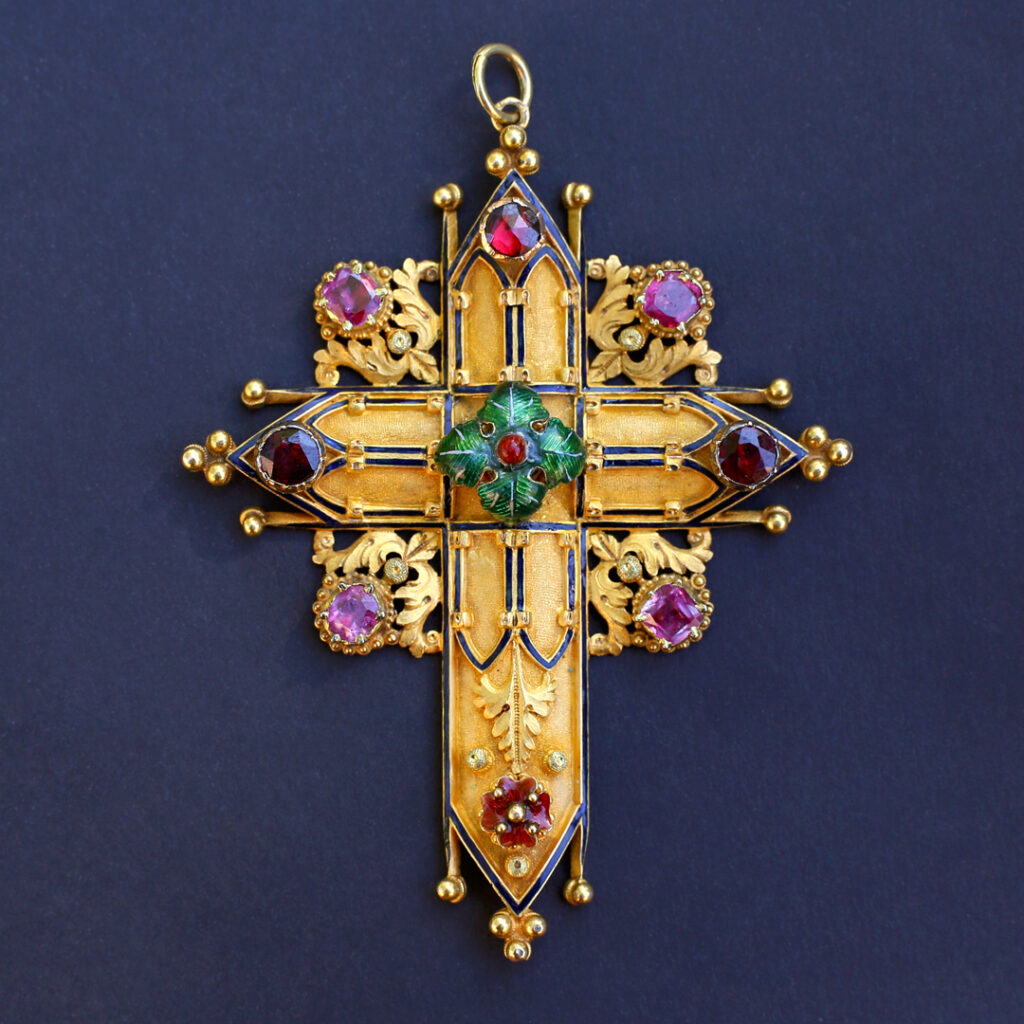
The Gothic revival of the 19th century heavily influenced Victorian cross designs, with intricate filigree, pointed arches, and quatrefoil motifs evoking medieval art and architecture.
At the same time, simpler designs, such as engraved 14k gold crosses or plain silver forms, offered more modest yet equally meaningful expressions of faith.
Many crosses featured inscriptions or compartments for holding mementos, such as locks of hair, adding a deeply personal touch to these cherished items.
Crosses were not confined to private devotion but became prominent markers of respectability and virtue. Women of all social classes wore them as pendants, often paired with long chains, while smaller, delicate crosses were incorporated into brooches or earrings.
The Victorian focus on domesticity and morality saw the cross emerge as a staple of appropriate female adornment, symbolizing purity, piety, and adherence to societal norms.
Beyond personal use, crosses were also gifted for significant life events, such as baptisms, confirmations, and weddings. These gifts often became treasured family heirlooms, passed down through generations, imbuing the cross with layers of shared memory and tradition.
As the century progressed, the industrial revolution made crosses more widely available, with new techniques allowing for mass production.
This democratization of the cross ensured its place as a ubiquitous symbol, accessible to all, while handcrafted pieces continued to be prized for their artistry and sentiment.
The Victorian era’s fascination with symbolism, spirituality, and emotion gave the cross a multifaceted role as an object of faith, fashion, and personal meaning.
Whether worn as a quiet testament to devotion or as an expression of grief and remembrance, the cross during this period reflected the complex interplay of religion, art, and the deeply sentimental character of Victorian society.
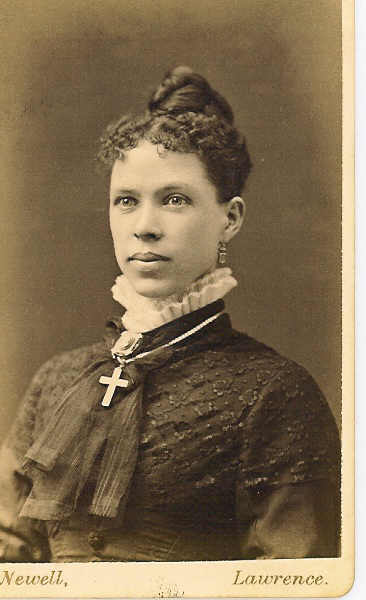
VICTORIAN lady wearing a cross pendant, cameo brooch and dangling earrings. courtesy to morning glory
The Cross in the 20th Century: Tradition, Transformation, and Individuality

The 20th century saw the cross undergo significant evolution, becoming a symbol that transcended its religious roots to embody personal expression, cultural identity, and artistic innovation. While it remained a central emblem of Christian faith, the cross also adapted to the sweeping changes of a century defined by technological advances, social upheaval, and globalization.
Faith and Tradition
For much of the century, the cross retained its deep connection to Christianity, serving as a marker of devotion, hope, and community. Worn as pendants, brooches, or incorporated into rosaries, crosses continued to hold significant spiritual meaning, particularly during moments of crisis such as the two World Wars. Soldiers carried small, often plain crosses as talismans of protection and reminders of faith amidst the horrors of war. Families left behind cherished crosses as symbols of prayer for the safe return of their loved ones.
The mid-20th century, with the rise of media and film, cemented the cross as a recognizable visual symbol. Iconic representations of crosses in religious settings, such as towering church steeples or the small, delicate cross worn by a devout character, reinforced its presence in popular culture. Crosses also marked significant moments in life, continuing to be gifted for baptisms, confirmations, and weddings, embodying the sacred transitions of Christian life.
Cultural and Artistic Innovation
The cultural revolutions of the 1960s and 1970s brought a new dimension to the cross, as it became a medium for artistic expression and a symbol of countercultural movements. Designers reimagined the cross, crafting bold, avant-garde interpretations that blended religious iconography with modern aesthetics. Crosses in unconventional materials, such as stainless steel, wood, or resin, reflected the era’s spirit of experimentation and individuality.
The punk and goth subcultures of the late 20th century adopted the cross as a symbol of rebellion and identity. Paired with leather, chains, and dark clothing, crosses were stripped of their traditional meanings and recontextualized as statements of defiance, challenging societal norms while still evoking the power of their historical significance.
Personal Expression and Mass Accessibility
Advances in mass production and global trade democratized the cross as an accessory, making it accessible to people of all walks of life. From high-end jewelry houses crafting crosses in gold and diamonds to affordable versions available at department stores, the cross became a versatile piece of adornment. Its wearers imbued it with a wide range of meanings, from deeply personal declarations of faith to purely aesthetic choices.
The latter half of the century also saw the cross become a universal fashion icon, worn by individuals regardless of their religious affiliation. Celebrities popularized the cross as a style statement, blending it with contemporary trends and propelling its status as a timeless accessory.
Enduring Legacy
By the close of the 20th century, the cross had achieved a dual role: as a sacred emblem steeped in centuries of tradition and as a dynamic symbol of individuality, cultural shifts, and artistic exploration. Whether worn as a mark of faith, a gesture of remembrance, or a statement of style, the cross remained a powerful and adaptable symbol, reflecting the complexities of a century that reshaped how we express identity, spirituality, and creativity.
The Cross in Contemporary Fashion: Iconography, Individuality, and Innovation
In contemporary fashion, the cross has transcended its origins as a purely religious emblem to become a versatile and universal symbol of style, identity, and cultural expression. From the high-fashion runways of Paris to everyday streetwear, the cross has evolved into a dynamic accessory that reflects both personal meaning and artistic innovation.
A Statement of Identity
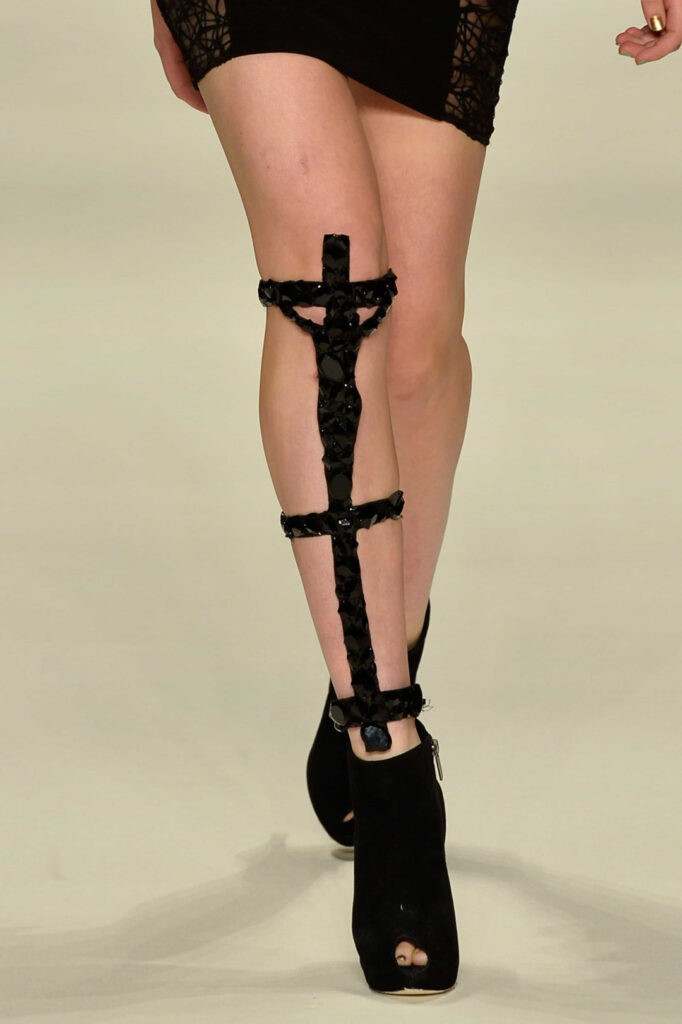
For many, the cross continues to carry deep spiritual significance, worn as a testament to faith and devotion.
However, in today’s globalized and diverse world, its meaning has expanded, often signifying personal identity or cultural heritage.
The simplicity and recognizability of the cross allow individuals to interpret it in myriad ways, blending tradition with contemporary flair.
From Minimalism to Maximalism
Designers today reimagine the cross in a range of styles, from understated minimalism to bold maximalism.
Sleek, geometric crosses in silver or gold align with modern trends for subtle, everyday elegance, while oversized, gem-encrusted designs recall the opulence of past eras, blending historic inspiration with modern glamour.
Brands like Gucci, Balenciaga, and Dolce & Gabbana have incorporated crosses into their collections, combining them with intricate embroidery, lace, and bold silhouettes to make dramatic statements on the runway.
Subculture and Rebellion
The cross remains a staple in subcultural fashion, symbolizing individuality and defiance. In gothic, punk, and alternative styles, crosses are often worn as oversized pendants, layered chains, or embellished on clothing, evoking both spiritual undertones and a rebellious edge. These interpretations strip the cross of its traditional context, transforming it into an icon of countercultural aesthetics.
Gender Fluidity and Versatility
Contemporary fashion celebrates the cross as a unisex accessory, free from traditional gender constraints. Whether in delicate gold for a subtle touch or as part of bold, edgy designs, crosses have become a staple in gender-neutral jewelry collections. This versatility underscores the cross’s ability to adapt to shifting cultural and societal norms.
Cultural Fusion and Artistic Innovation
In the hands of modern designers, the cross serves as a canvas for innovation, often incorporating materials and motifs from various cultures. Designers draw from a range of inspirations, combining the cross with symbols from African, Asian, or indigenous traditions, creating pieces that reflect the globalized nature of contemporary fashion.
Mixed-media designs featuring wood, resin, recycled materials, and even digital prints showcase how the cross continues to evolve as a motif of artistic creativity.
A Timeless Symbol in a Modern World
The enduring presence of the cross in contemporary fashion is a testament to its timeless appeal. Whether worn as a statement of faith, an artistic expression, or a fashion-forward accessory, the cross bridges the past and present, embodying the dynamic interplay of history, culture, and individual style. Its adaptability ensures that it remains a central element of modern fashion, celebrated for its elegance, versatility, and rich symbolic resonance.
The Cross, From Ancient Egyptians to Contemporary Fashion
The history of the cross is a journey through time, rich with meaning and transformation. Its origins trace back to ancient Egypt, where the ankh, a looped cross, symbolized eternal life and divine balance. With the rise of Christianity, the cross became a powerful emblem of faith and salvation, firmly rooted in the story of the crucifixion.
By the Middle Ages, it had evolved into a marker of devotion, social rank, and spiritual protection, adorned with intricate filigree and precious stones.
The Renaissance elevated the cross further, transforming it into a masterpiece of art and opulence, reflecting the era’s blend of faith and grandeur. In the 18th century, Rococo designs brought a softer, more elegant approach, while the Victorian era imbued the cross with deep sentimentality, particularly in mourning jewelry crafted from jet and gold.
By the 20th century, the cross transcended its religious roots, becoming a versatile symbol of individuality and cultural identity, embraced in subcultures and reimagined through artistic innovation.
Today, the cross continues to captivate as a timeless emblem, blending spirituality, history, and contemporary creativity. Whether as a statement of faith, a fashion accessory, or a deeply personal keepsake, the cross endures as one of the most potent and adaptable symbols in human history.
